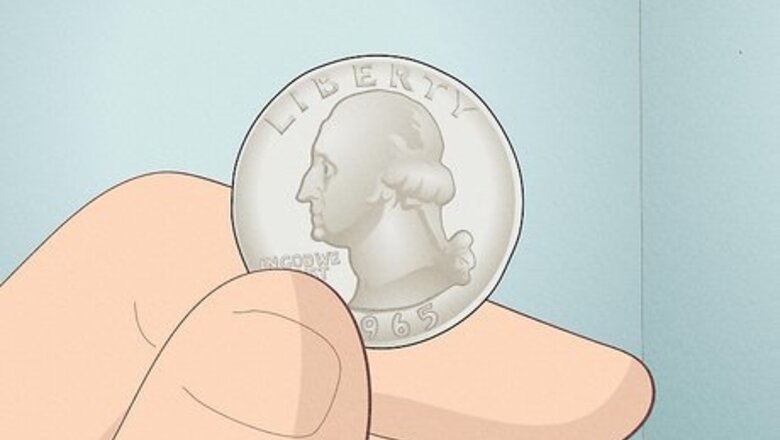
views
Why are silver 1965 quarters so rare?

Silver 1965 quarters are special because they’re transitional error coins. In 1964, quarters were still struck with a 90% silver planchet. In 1965, quarter production changed to a clad composition planchet made of copper and nickel. However, a few (the exact number is unknown) were struck on a silver planchet instead. Silver 1965 quarters are worth over $7,000 because they were made by mistake! If you find one in your pocket change, you can tell a 1965 quarter is silver by its slightly heavier weight and shiny completely silver color. Silver 1965 quarters have no visible copper around the edge of the coin. Regular clad 1965 quarters look more like present-day quarters since they’re made with the same metal composition. “Planchets” are the blank metal disks used to make coins. Therefore, saying a quarter was “struck on a silver planchet” means that the quarter was made using a blank coin made of 90% silver.
Identifying a 1965 Silver Quarter

Compare the quarter to copper-nickel clad quarters. Look at the date on each of your quarters to see if you have one marked 1965. If you do, note the overall shine and color of the quarter. Silver 1965 quarters look shinier than normal copper-nickel clad quarters, despite showing signs of age (since they're over 50 years old at this point).
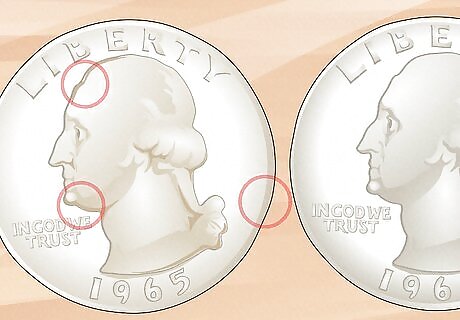
Inspect the edge of the quarter for copper. If your 1965 quarter is a standard clad copper-nickel coin (the same composition used in quarters today), reddish-orange copper will be visible along the quarter's reeded edge. If your 1965 quarter is the rare silver error coin, its reeded trim will be entirely silver with no trace of copper. "Reeded" edges refer to the ridged or grooved edging mainly found on quarters and dimes in US currency.
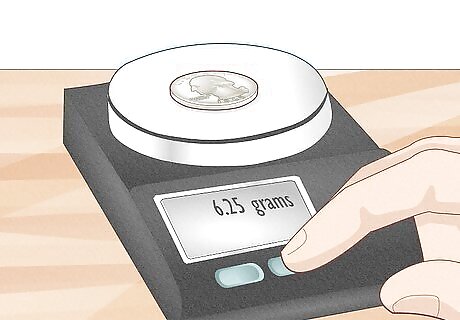
Weigh the quarter on a digital coin scale. If your 1965 quarter passes the eye test (it looks silver all over despite its age), the next step is to weigh it. Silver quarters are heavier than standard clad copper-nickel quarters. Place the quarter on a digital coin scale. You can tell if a 1965 quarter is silver because it will weigh 6.25 grams—give or take a few hundredths of a gram, depending on the wear and planchet. Meanwhile, standard clad 1965 quarters will be lighter, weighing roughly 5.67 grams, with slight variations possible. Essentially, if your 1965 quarter weighs over 6 grams, it's worth moving to the next step of the authentication process!
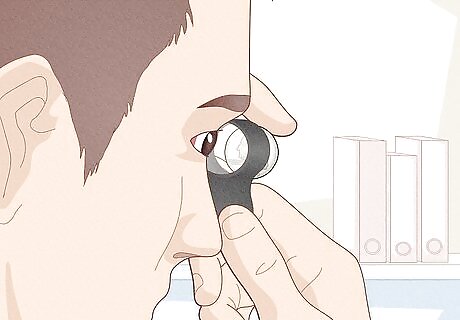
Get the quarter inspected by a coin certification firm. Once you have examined and weighed your 1965 quarter, verify its rare "transitional error" status by bringing it to a third-party certification company. They can establish the coin's exact value and make selling easier since a certified authentic coin is less of a risky investment. Credible certification companies include: Professional Coin Grading Service (PCGS) Numismatic Guaranty Corporation (NGC) American Numismatic Association Certification Service (ANACS) Independent Coin Graders (ICG)
Identifying Other Valuable Error Coins
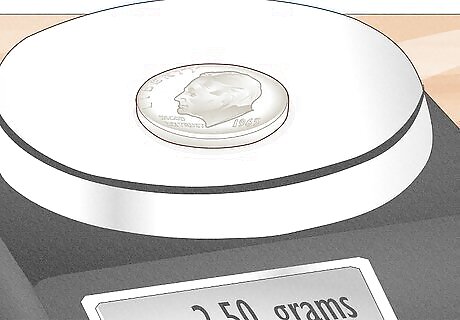
Weigh a 1965 dime to tell whether it is silver. Just like the infamous 1965 silver quarter, a number of 1965 dimes were struck on 90% silver planchets despite the switch to copper-nickel clad coins that year. Identifying silver 1965 dimes is a similar process: simply place the dime on a digital coin scale and check its weight. A silver dime weighs 2.50 grams, while a normal dime weighs 2.27 grams. If you don't have a digital coin scale, any scale capable of measuring in increments of hundredths of a gram will also work.
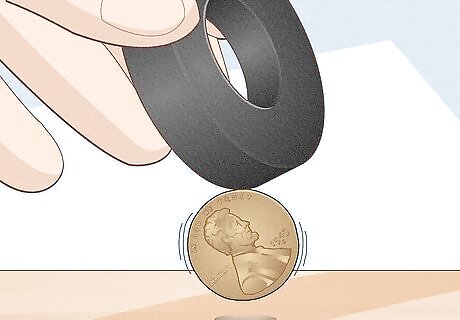
Use a magnet to recognize a 1943 copper penny. In 1943 at the height of World War II, most pennies were struck with steel planchets because copper and nickel were needed for the war effort. However, a few 1943 copper pennies were struck in error. Hold the 1943 penny up to a magnet; if the coin sticks, it's steel. If it doesn't stick, it's a rare 1943 copper penny. Transitional error 1943 copper pennies are precious, often worth tens of thousands! Steel pennies could still be a worthwhile find! Circulated steel pennies are only worth about 30 cents now, but uncirculated pennies (pennies that never entered the money supply and show no signs of wear) are worth 50 cents to 20 dollars.
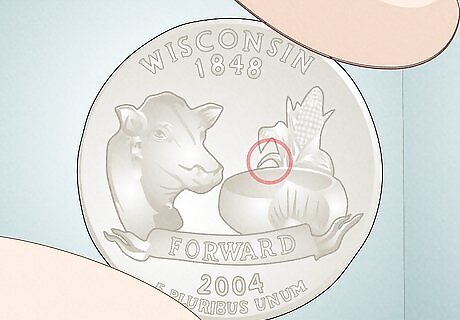
Look for an extra leaf on 2004 Wisconsin state quarters. From 1999 through 2008, the US Mint issued commemorative quarters for all 50 states, and a few Wisconsin quarters feature an error on the back of the coin. Examine the ear of corn on 2004 Wisconsin quarters; normally, the corn will have one leaf on the left side, but error coins appear to have a second below the first. The extra leaf results from a defective coin die (the metallic stamps used to strike new coins) that altered the appearance of these rare quarters. There are two varieties: a Low-Leaf quarter with the second leaf further down the corn ear and a High-Leaf quarter with the two leaves located much closer together. These error quarters can be worth as much as $200 or $300!
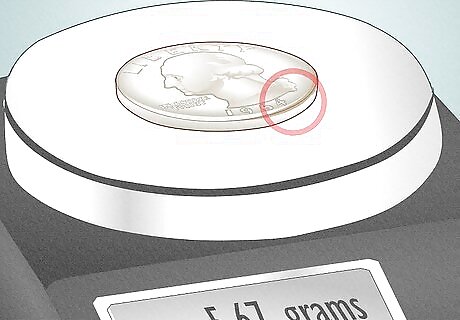
Check a 1964 quarter's weight and edge to find clad planchet coins. The inverse of the 1965 silver quarter, a small number of quarters in 1964 were stuck with clad copper-nickel planchets in error ahead of the permanent shift to clad planchets. If you find a 1964 quarter that has reddish-orange copper visible around its edge, weigh the coin on a digital coin scale. This rare error coin weighs 5.67 grams. A circulated 1964 clad quarter is worth at least $5,000, while an even rarer uncirculated coin is worth around $12,000!
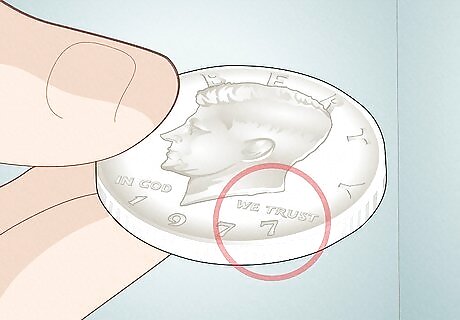
Examine a 1971 or 1977 half-dollar to see if it was struck with silver. In 1971 and 1977, some Kennedy half-dollars (featuring the face of John F. Kennedy on the front) were struck on 40% silver-clad planchets rather than standard copper and nickel-clad planchets. Look at the edge of the half-dollar: if it is all silver, you might have a silver-clad coin. As with any other rare coin, be sure to verify your 1971 or 1977 Kennedy silver half-dollar, as it can be worth thousands of dollars in good condition.
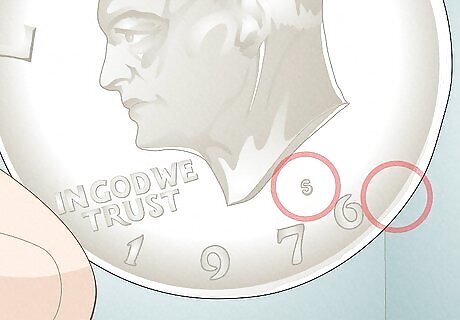
Find an Eisenhower silver dollar by checking the mintmark and edge. Between 1971 and 1976, the San Francisco Mint produced Eisenhower silver dollars struck with 40% silver planchets. Look for a small "S" mintmark on the front of the coin, signifying that it was minted in San Francisco. Then, examine the edge. If it's silver and not a copper color, you're looking at a silver dollar. Silver Eisenhower dollars were intentionally produced as commemorative coins available by special order. Despite this, some silver dollars accidentally entered circulation. Silver dollars with a lot of wear might not be worth much more than their original value, but pristine or uncirculated silver dollars can be worth thousands! Get the coin examined by a professional to determine its worth.

















Comments
0 comment